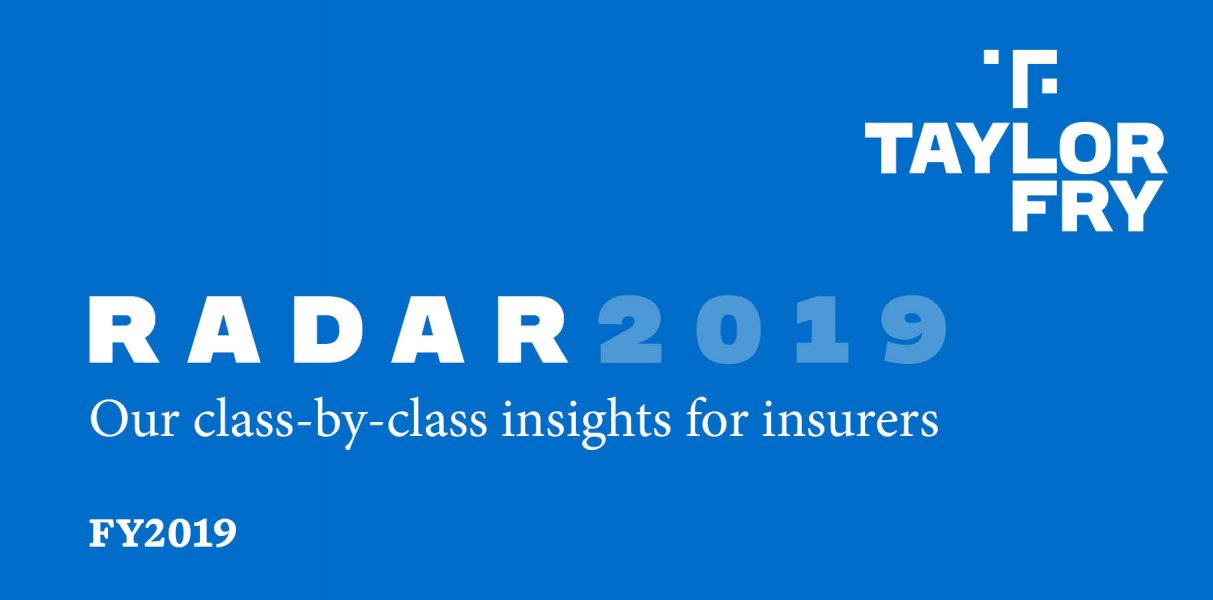RADAR 2019
Welcome to RADAR 2019, Taylor Fry’s inside look at the general insurance industry, the state of the market and what it means for insurers

Here’s a quick overview of the highlights from RADAR 2019, our class-by-class round up to the end of FY2019:
- Overall underwriting results for general insurers worsened over the year to FY2019, affected by catastrophic weather events, including Sydney hailstorms in December 2018, and Townsville floods in January and February 2019. The net loss ratio for the industry increased from 62% in FY2018 to 69% in FY2019, causing the net underwriting combined ratio to increase from 87% to 93% over the same period.
- Improved risk management and sophisticated pricing approaches are assisting insurers to maintain profitability in personal lines. But ongoing impacts from the royal commission have made insurers increasingly conscious of the need to balance shareholder and policyholder considerations. As well, flood exclusions may be challenged if proposed changes to unfair contract terms are adopted, requiring large premium increases for property policyholders in high flood-risk areas.

- The commercial insurance cycle appears to have turned in 2017, with rates hardening across most commercial classes. Despite this, profitability for many commercial classes continue to be under pressure. Profitability for Commercial Property was affected by catastrophic weather events, while profitability for Professional Indemnity has been impacted by rising litigation and class actions.
- Overall reserve releases on long-tailed classes were subdued during FY2019, which put further upwards pressure on incurred claims and loss ratios. In particular, Public and Products Liability experienced reserve strengthening during FY2019, which contrasted with several years of reserve releases in the preceding years.
- Falls in interest rates over FY2019 have resulted in a significant increase in long-tailed claim reserves. This places particular importance on having an investment strategy that has Asset Liability Management (ALM) at its core. Insurers with matched portfolios experienced capital gains in their assets to offset the increases in claims reserves.
Download RADAR 2019 for our expert insights on the shifts and trends in our industry to help you navigate your way through the ever-changing insurance landscape.
If you’re not currently subscribed to our updates, and you’d like to receive news from Taylor Fry, subscribe here.
Find out more about our Appointed Actuary and General Insurance services.
Related articles
Related articles
More articles

LA wildfires – implications for the upcoming Australian reinsurance renewals
What are the flow-on effects of the January LA wildfires in Australia?
Read Article

Cyber update – protection gap widens for SMEs
Win-Li Toh and Sarah Wood look at why SMEs risk being left behind and offer recommendations in a new Actuaries Institute dialogue paper.
Read Article






